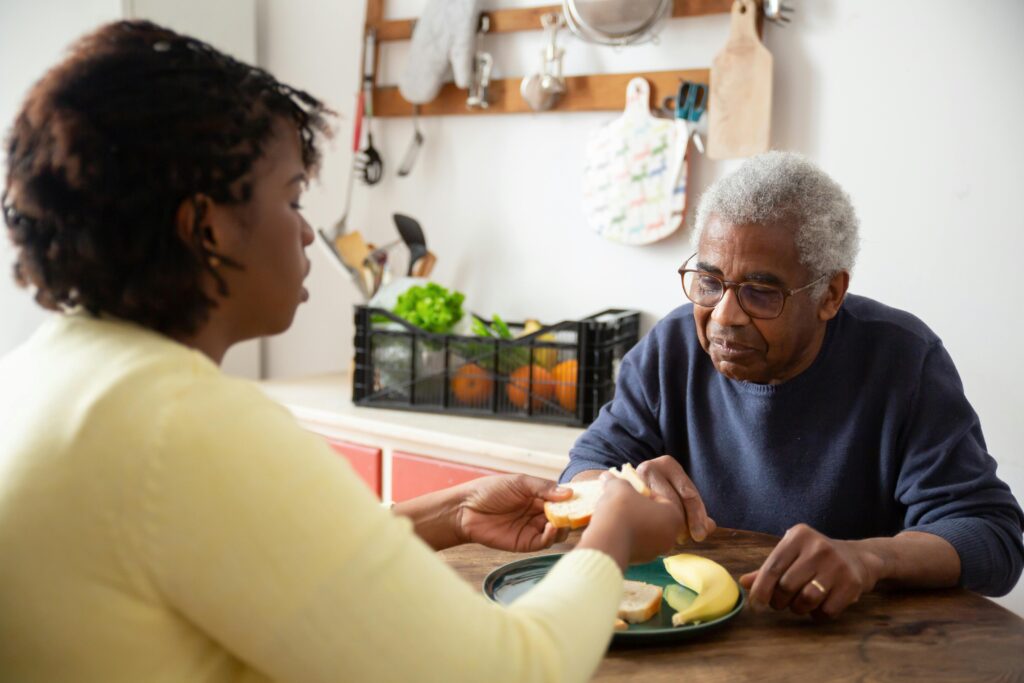The nuclear family has for decades been the subject of much discussion. What exactly is a “nuclear family,” what are its operational dynamics, and do the pros outweigh the cons?
To answer the first question, a nuclear family is what psychologists and sociologists consider the “basic universal form of family structure,” which consists of a husband, wife, and children. It may also include grandparents — all living under the same roof. Depending on circumstances, aunts, uncles, and extended family members might also be included.
Though the term was first used in 1924, the concept has been around since humans first appeared. In terms of functionality, this arrangement provided connection, safety, the sharing of responsibilities and tasks, and the maintaining of family (and tribe) cohesion. But is that the story today?
The Pew Research Center reports that nearly 60 million Americans now reside in households of two or more generations of adults. In 1971, that number was 14.5 million — that’s an amazing increase in just fifty years. In that time, the idea of a nuclear family has gone through some interesting permutations to what is now referred to as “alternative family arrangements,” such as same-sex parents, single-parent households, unmarried couples with children cohabitating, stay-at-home fathers, and more.
But even as the nuclear family landscape has adapted to shifting social trends and conventions, the dynamics have pretty much stayed the same for the simple reason that humans are humans and they come with a host of issues, agendas, opinions, beliefs, and wants and needs. As we’re all aware, families are the ground zero of testing out emotional narratives, identity building, and individuation, and pushing the envelope. It’s quite the stewpot instigating a rollercoaster of highs and lows, disruption and chaos, and times of togetherness and deep connection.

Whatever the family arrangement, its operational structure is dependent on the emotional needs of everyone in the household and whether those needs are being met or not. In any family, that can put a good deal of strain on one’s emotional stability, the living arrangement sustainability, and one’s long-term health. If parents move in, the living situation can be either enhanced or ruinous.
Oftentimes, the moving in of elder parents with their children revolves around the elder parents’ aging and possibly dwindling finances. When this happens, the dynamic of elder parents caring for their children, now parents in their own right, is reversed. Parents are now tasked with raising and caring for their own children, while at the same time attending to the wellbeing of their older parents.
If the elder parents are in physical or mental ill health, the strain on the parents as caretakers can be considerable. If any of the children are also dealing with physical, emotional, or mental challenges, that will contribute to the entire family being negatively affected.
True, many elder parents are able to contribute to the welfare of the family from caring for grandchildren to even sharing some of the financial burden. But there are a host of potential points of disagreement and friction that can cause a lot of discord in the family and can create what is referred to as “multigenerational madness.” This “madness” is brought about by a number of issues:
• Too much togetherness and not enough personal space and “me time.”
• Unsolicited elder parental advice on any subject, but most specifically differences about child rearing and family finances.
• The household is too often in a state of disorder and messiness.
• Elder parents’ interior home design ideas clash with the parents’ desires.
• More than one language is spoken at home and the children don’t speak the language of their grandparents.
• Constant noise and not enough periods of quiet or designated quiet spaces.
• Conflicting smells from cologne to cooking, scented candles, incense, etc.
• Elder parents aren’t up to date on household technological advances.
• The mother is usually the only person trying to keep the household clean and ordered.
• With physically compromised elderly parents, the house isn’t designed for their needs and safety.
• Too many cooks in the kitchen can lead to conflicts and resentment.
• Family members have to move out of their bedrooms and common spaces in order to accommodate elder parents’ physical needs.
• The home is small with only one bathroom.
All of these impact family members’ emotional wellbeing and ability to cohabitate harmoniously. The decision to have parents move in with grown children requires a lot of thoughtful planning and the acknowledging of potential drawbacks. That includes taking into account family issues of any kind, as well as any family trauma that might have occurred. Avoiding either of these often leads to eventual blowups, heartache, further tension and stress, meltdowns, and burnout.
The flipside of all the aforementioned challenges are the benefits of a multigenerational household that can bring a family even closer by creating an environment of mutual support, consideration, appreciation, respect, and family harmony.

Probably the most notable benefit is that having multiple generations in one household gives children and youth a greater perspective on life. Learning about the lived experiences of their grandparents helps younger people see life from different perspectives, as well as learn about family history and social and world events that occurred before they were born.
Another important benefit is the elder wisdom grandparents can impart and sometimes, younger people find they can share their thoughts and feelings more easily with a grandparent than they can their parents. At the same time, kids may be more willing to listen to a grandparent’s adult advice. Additionally, grandparents often don’t put the demands and stressors on their grandchildren that the parents do, thereby making them not an adversary but possibly an ally.
In this process, youth can gain a greater level of empathy and respect for not only their grandparents, but also other adults. Grandparents may have struggles in which younger people can be of aid from helping with walking to doing things around the house, dressing, getting in and out of cars, help with shopping, playing games, etc.
Something grandparents can share with grandchildren is more about their ancestral culture, traditions, and celebrations. If the grandkids only speak English, then grandparents can be instrumental in helping them become bilingual. In all of this, young people have the opportunity to learn to live with more than just their parents and any siblings and to also not be caught up so in their own little world, which these days means being glued to their phones.
Grandparents can in return help with household chores, babysitting, running errands, playing chauffeur to their grandchildren’s activities, and contribute to family financial needs. As a whole family group, everyone gets to be involved in celebrating milestones, creating greater flexibility and understanding in family dynamics, and bonding with each other more meaningfully.
Something else that can be capitalized upon is the values passed down from generation to generation, such as compassion, generosity, honesty, authenticity, reciprocity, consideration, respect, integrity, morality, inclusivity, cultural awareness, interconnectedness, humor, being of service, and the power of self-reflection.
So, multigenerational “madness” can be refashioned into multigenerational “magic.” A significant component in this transformation is the establishment of family traditions. Researchers have found that family traditions are very instrumental in early child development. They have found that traditions help:
• Build emotional security – young children need a sense of family stability through predictability and safety. This can be as simple as celebrating birthdays and holidays to establishing Tuesday dinner is always Taco Tuesday and Friday is always pizza to kick off the weekend.
• Build a sense of identity – children develop their identity through knowing their cultural background, which gives them a sense of family origins, historical perspective, and their placement in the world.
• Build stronger family bonds – beyond the building of memories, family members who are involved in traditions and events help the family create more meaningful, trusting, loving bonds and togetherness.
Additional benefits include building social and cognitive skills, understanding and respecting cultural roots and multiculturalism, and learning life and coping skills.
In this regard, as was queried at the beginning of this article whether the pros outweigh the cons, the answer is a definite “yes!” So if becoming a multigenerational family is on the horizon, there will be challenges, but the benefits to all family members are many and deeply rewarding and enriching. Everyone has something to contribute and when given the chance to shine, everyone wins!


